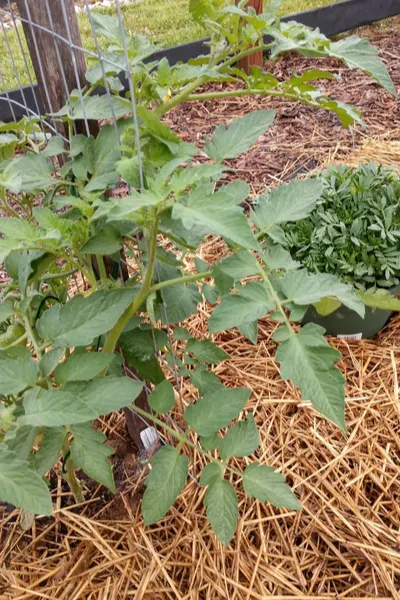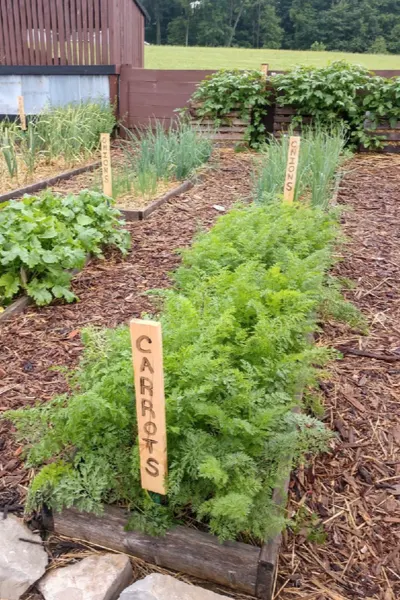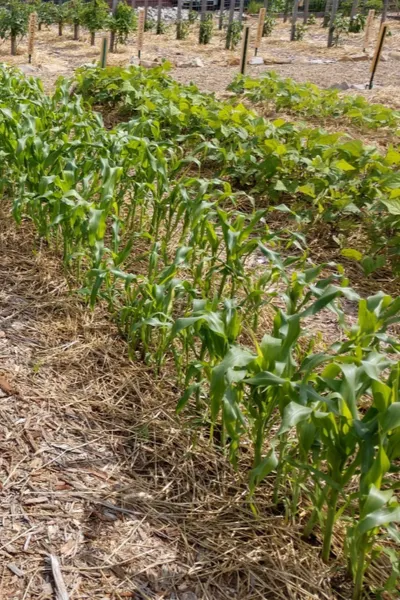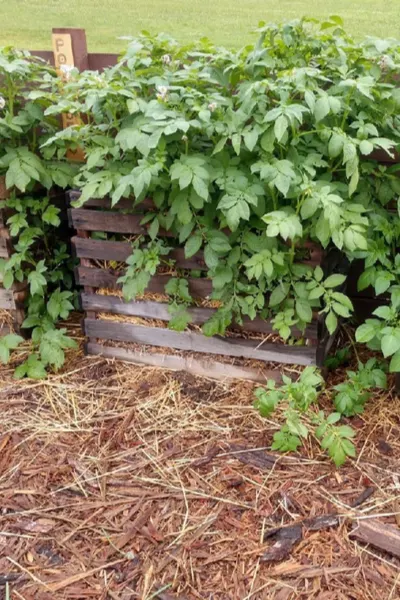When it comes to gardening with too much rain, this has been a year for the record books.
Up until Friday of this past week, we had an unbelievable stretch of 13 straight days where rain fell at some point on our little farm.
Five of those days included rains of more than an inch. And one of those days, the rain totaled a whopping 3+ inches!
It has been nearly impossible to keep up with mowing.

Not only is the grass growing at a record pace, it can barely dry out enough to put the mower on it.
And our rain collection totes? Well, they have been shut off for weeks – filled with over 750 gallons of water that probably won’t ever be needed this year.
To say the least, it has been one incredibly soggy spring.
But through it all, one thing has come through with flying colors – our Raised Row Garden!
And as you will see below with the photos and video tour of the garden, a Raised Row garden really can handle the rain.
Gardening With Too Much Rain – The Power of Raised Row Gardening
We talk about it often, but in addition to being extremely easy to maintain, one of the biggest benefits of a Raised Row Garden is that it handles both drought and excessive rain with ease.

And if there was ever a year to prove the “gardening with too much rain” part, this has been it!
So why has it worked so well in a year where the rain simply won’t stop?
Actually, as you will see below, there are just a few simple keys to it all. And, one little extra step we take when it rains a little to much to keep it all growing well.
The Wonders of Not-Till Gardening – Keeping Mud Out Of The Picture
One of the hardest things about too much rain is the mud and muck it creates in it’s wake.
And never having to till your garden soil is the perfect way to keep that dreaded mud out of the picture – 100%!

Soggy, wet soil does more than create a mess. It also destroys the soil structure. And it certainly also keeps plants from getting nutrients from the soil too.
The no-till philosophy always allows us to plant our garden in the early spring, no matter what the weather. See : Raised Row Gardening – The Book
The cover crops planted the previous fall really help keep the soil underneath in-tact and ready to go.
And with the tapered rows of a Raised Row garden, it helps to shed off massive amounts of rain – another big help during this current monsoon season we seem to be experiencing.
The Mulched Rows – A Big Secret To Gardening With Too Much Rain
Beyond the no-till philosophy, the mulched rows of a Raised Row garden really make all the difference once the garden is planted.
You can see that really well in the video tour below that was shot just this past week – after a hard rain of course!
There is never a worry of walking in the garden after or even during a rain.
And even better, never the difficult chore of trying to push a rototiller through the mud to clear the rows of weeds.
If you cannot view the video below, you click here to see the entire tour on our OWG YouTube Channe as well: A Video Tour Of Our Raised Row Garden
The mulch also helps to shed off excess water. And when needed, it also helps hold moisture in during times of drought.
That means less stress on the garden soil, and certainly less stress on the gardener!
One of the things we love most is heading out and walking through the garden right after a rain. And with a raised row garden, there is never a worry of having to wear boots!
Adding An Extra Boost Of Power
And last but not least, in a soggy and wet year, we do take one additional step to help our plants.
We normally fertilize our vegetable plants every few weeks with either compost tea or worm castings. See : How To Fertilize Your Vegetable Plants

But this year, with the massive amount of saturation from the rain, we bumped fertilizing up to every 7 days.
It is amazing how the extra boost from the Worm Castings has helped them continue to grow strong!
Here it to Raised Row Gardening – and having fun no matter what the weather might bring!
Happy Soggy Gardening – Jim and Mary.
Jim and Mary Competti have been writing gardening, DIY and recipe articles and books for over 15 years from their 46 acre Ohio farm. The two are frequent speakers on all things gardening and love to travel in their spare time.
As always, feel free to email us at thefarm@owgarden.com with comments, questions, or to simply say hello! You can sign up for our free email list in the subscribe now box in the middle of this article. Follow us on Facebook here : OWG Facebook. This article may contain affiliate links.
